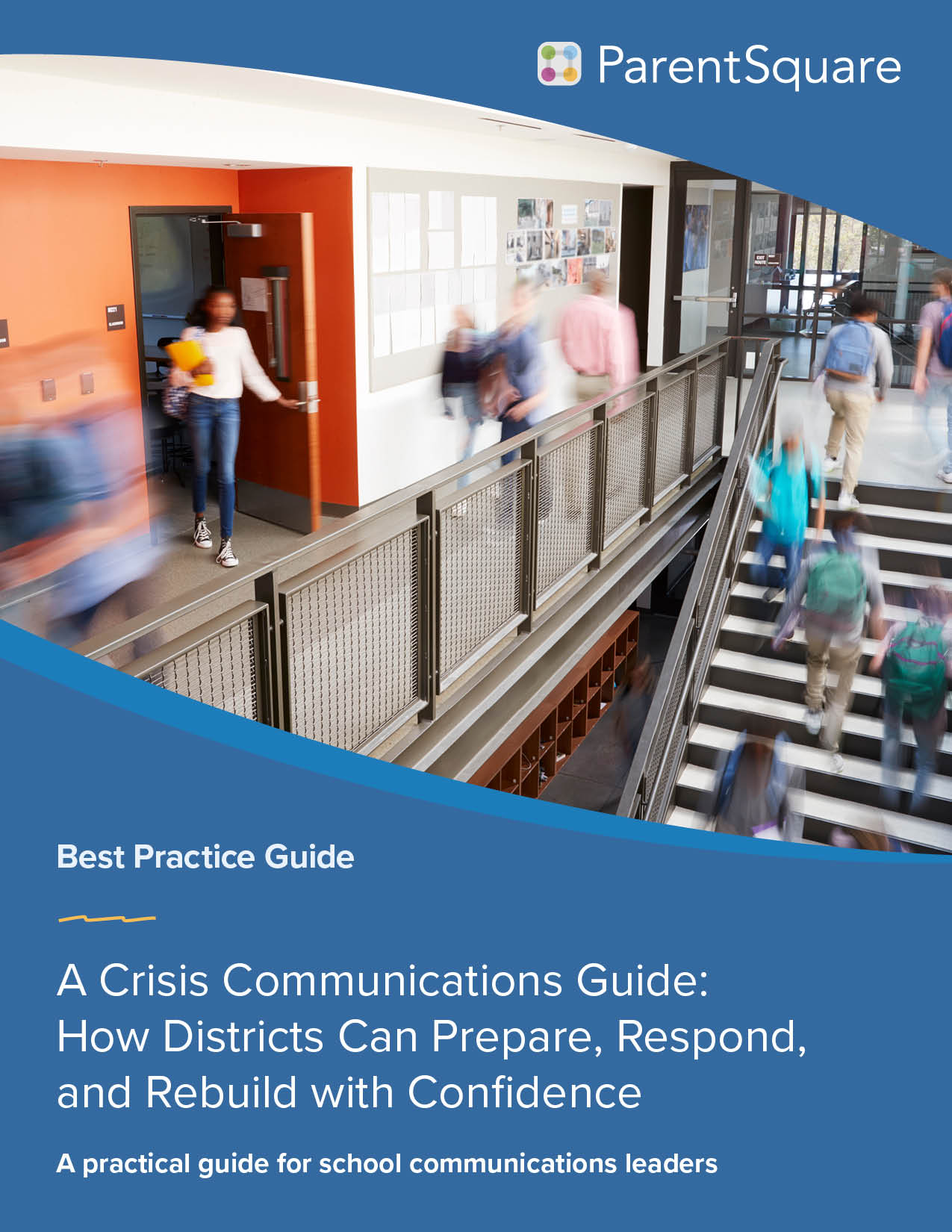
Alex Meis, MPA, Sr. Director of Product and Chronic Absenteeism Expert, ParentSquare
At a Glance:
- Attendance teams help schools reduce absenteeism by aligning staff around common attendance goals, using data to inform intervention, and coordinating outreach.
- Building a team is a proactive step toward a more equitable, consistent approach to attendance improvement.
- This guide walks through team structure, responsibilities, and weekly practices to build stronger school-home connections.
- Attendance Teams can apply a tiered support approach, starting with universal practices and scaling up to targeted interventions.
Attendance is a shared responsibility, and it starts with having the right people, systems, and practices in place. One of the most effective ways schools can address chronic absenteeism is by building a dedicated attendance team. These teams bring structure and focus to an issue that can affect every part of the student experience.
Why attendance teams are crucial to creating a culture of attendance

Schools across the country are seeing the long-tail effects of chronic absenteeism, and the truth is: behind every absence is a complex web of challenges. That’s why attendance improvement can’t fall on one person’s shoulders. It takes a team.
An attendance team is a school’s frontline group for addressing absenteeism. These teams bring together educators, counselors, data specialists, and sometimes even community partners to identify attendance trends, develop interventions, and engage families in a supportive way.
This collaborative approach is the foundation of school attendance teams, where staff align around common goals, use data effectively, and coordinate early outreach before chronic absenteeism has a lasting impact.
Their work strengthens a broader culture where students feel seen, families feel supported, and everyone understands that showing up matters.
In schools where attendance teams thrive:
- Families receive communication early—not just when attendance is already a problem
- Staff speak with a unified voice about the importance of attendance
- Students are recognized not just for academic success, but for their presence and participation
- Tiered attendance supports are applied equitably, not punitively

Roles on an attendance team
An effective attendance team includes a range of perspectives. Typical members include:
- Team Leader: Keeps the team focused and accountable
- School Counselor: Brings insight into student wellness and home dynamics
- Educator: Shares classroom-level perspectives and voices
- Nurse: Highlights health-related attendance factors
- Data Role: Knows the student information system (SIS) and can pull reports
- Community Partner (if available): Extends support beyond the school walls
The team size may vary, but 4–6 people is often ideal. What matters most is consistency and collaboration.
Don’t have access to a full team? Start small. Even a few committed staff members working together consistently can drive meaningful improvement. What matters most is coordination, clarity, and compassion.
4 keys to an effective attendance team
Building an attendance team is one thing; making it effective is another. The most successful teams do more than meet regularly or review data. They operate with shared purpose, clear structure, and a system of support that empowers staff to act early and engage families in meaningful ways. Here’s what sets high impact attendance teams apart:
1. Have clear goals and defined roles
Every member has a role to play. Whether it’s pulling data reports, contacting families, or coordinating services, teams benefit from SMART goals and well-defined responsibilities.
The SMART Goals Framework
Strong attendance teams use SMART goals to stay focused and effective. Here’s an example of how a team might apply this framework:
- Specific: Our attendance team will meet biweekly to ensure that all families of chronically absent students are successfully contacted. We’ll also aim to improve daily attendance by 5% over the course of the school year.
- Measurable: Our data analyst will generate weekly attendance reports that include each student’s attendance rate, allowing us to track progress and prioritize support.
- Achievable: This goal is attainable because responsibilities will be shared across the team. Each member will be assigned 5–10 students identified as chronically absent to monitor and support.
- Relevant: Addressing attendance proactively throughout the year is essential. Since students can become chronically absent by missing just two days per month, reviewing data regularly helps us intervene early and prevent patterns of disengagement.

2. Make data-driven decisions
Weekly or biweekly meetings allow teams to stay ahead of patterns. By reviewing real-time attendance data, they can identify students at risk and track the effectiveness of their interventions.
3. Implement a tiered support framework
The most effective attendance teams aren’t just reacting to absences, they’re proactively working within a structured system to support every student. Many schools follow a Multi-Tiered System of Supports (MTSS) model to align attendance interventions with student needs. This tiered framework helps teams differentiate their strategies, matching the level of support to the severity of the attendance issue. The result: interventions that are responsive, equitable, and timely.
This framework is typically organized into three tiers of support:
- Tier 1: Promotes positive attendance schoolwide
- Tier 2: Provides early outreach to students with emerging patterns
- Tier 3: Offers intensive support to students with chronic absenteeism
This structure allows schools to be both proactive and responsive, while avoiding one-size-fits-all solutions.
Want to learn more about how tiered communication strategies fit within the MTSS framework? Check out this blog on how ParentSquare supports Tier 1 and Tier 2 interventions to help reduce chronic absenteeism.

4. Develop weekly practices
Meeting weekly or every other week allows teams to act early and stay responsive. Here’s what that can look like in practice:
- Review attendance reports to identify students approaching chronic levels
- Contact families to understand the “why” behind each absence
- Develop individual attendance plans with tailored supports
- Refer students to services like tutoring, counseling, or transportation help
- Track outcomes to refine interventions over time
When these actions happen regularly, the team becomes a trusted part of the school’s student support system, and not just a reactive committee.
Need help getting your team meeting started? Here’s an agenda that you can download and modify to meet your team’s capacity, structure, and culture.

Conclusion: Every team needs a plan
Attendance doesn’t improve on its own, and it shouldn’t be a solo effort. An effective attendance team brings structure, strategy, and compassion to a challenge that affects every aspect of student success.
By building a thoughtful team, aligning on goals, and acting early, schools can move from reactive to proactive—and make every day count for more students.
Let’s strengthen attendance together. Schedule a demo to see how ParentSquare supports the full family engagement infrastructure schools and attendance teams need to build trust, reach every family, and support student success.
FAQs about attendance teams
Q: How often should our attendance team meet?
A: Weekly or biweekly is ideal. With every missed day, early intervention becomes harder—so timeliness is key.
Q: My staff is so busy. How can we fit this into our schedule?
A: Even budgeting 30 minutes, every other week, is better than nothing! With an organized leader, a consistent agenda, and clear goals, your staff will build the muscle to meet with ease and speed!
Q: What if we don’t have a data person on staff?
A: Start with what’s available. Even basic SIS exports can reveal trends. Consider asking someone in your district data team for regular reports.
Q: Can we do this at the district level?
A: Absolutely. Districtwide teams can support school sites, provide training, and monitor system-level trends to drive improvement across schools.

